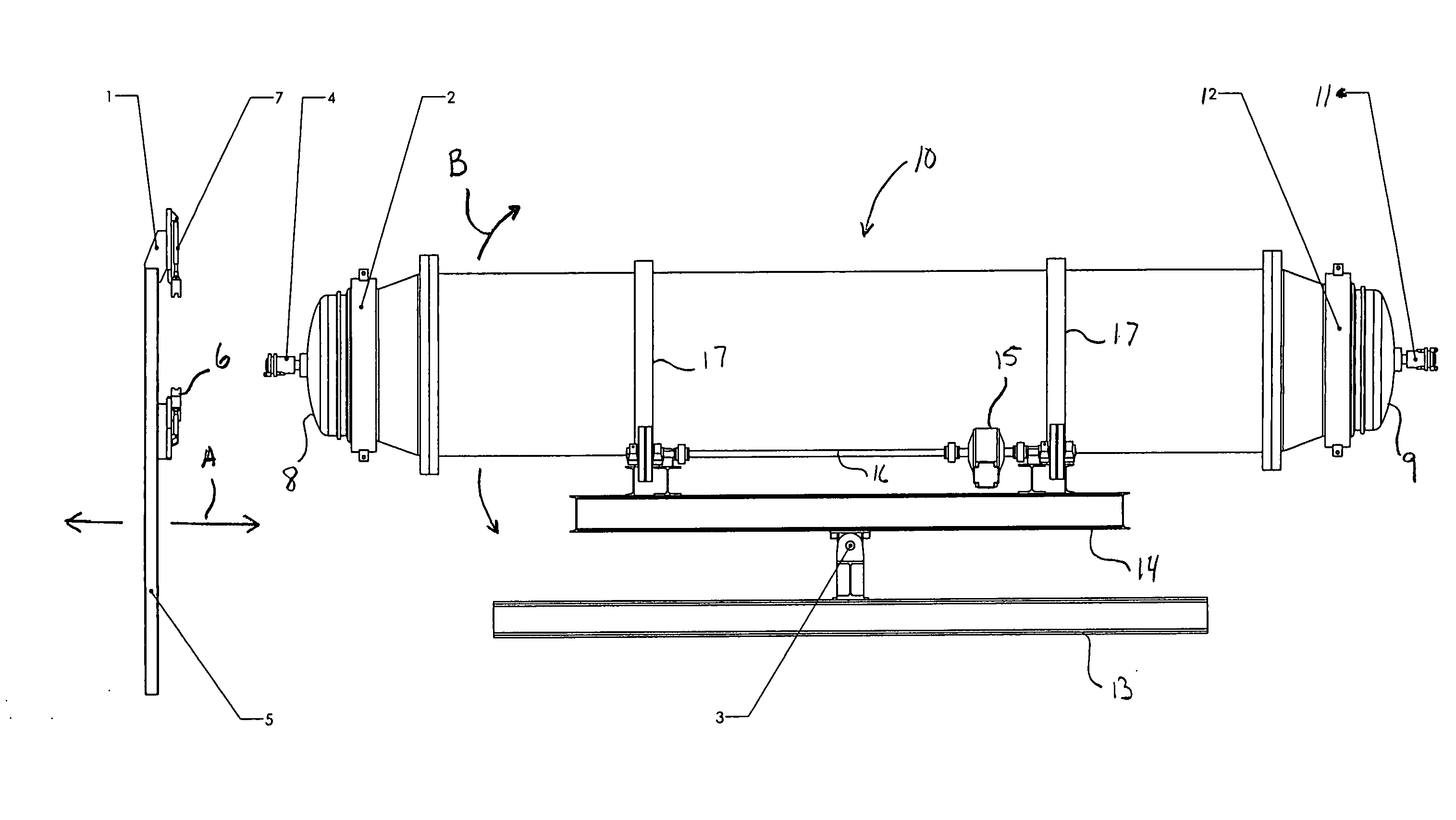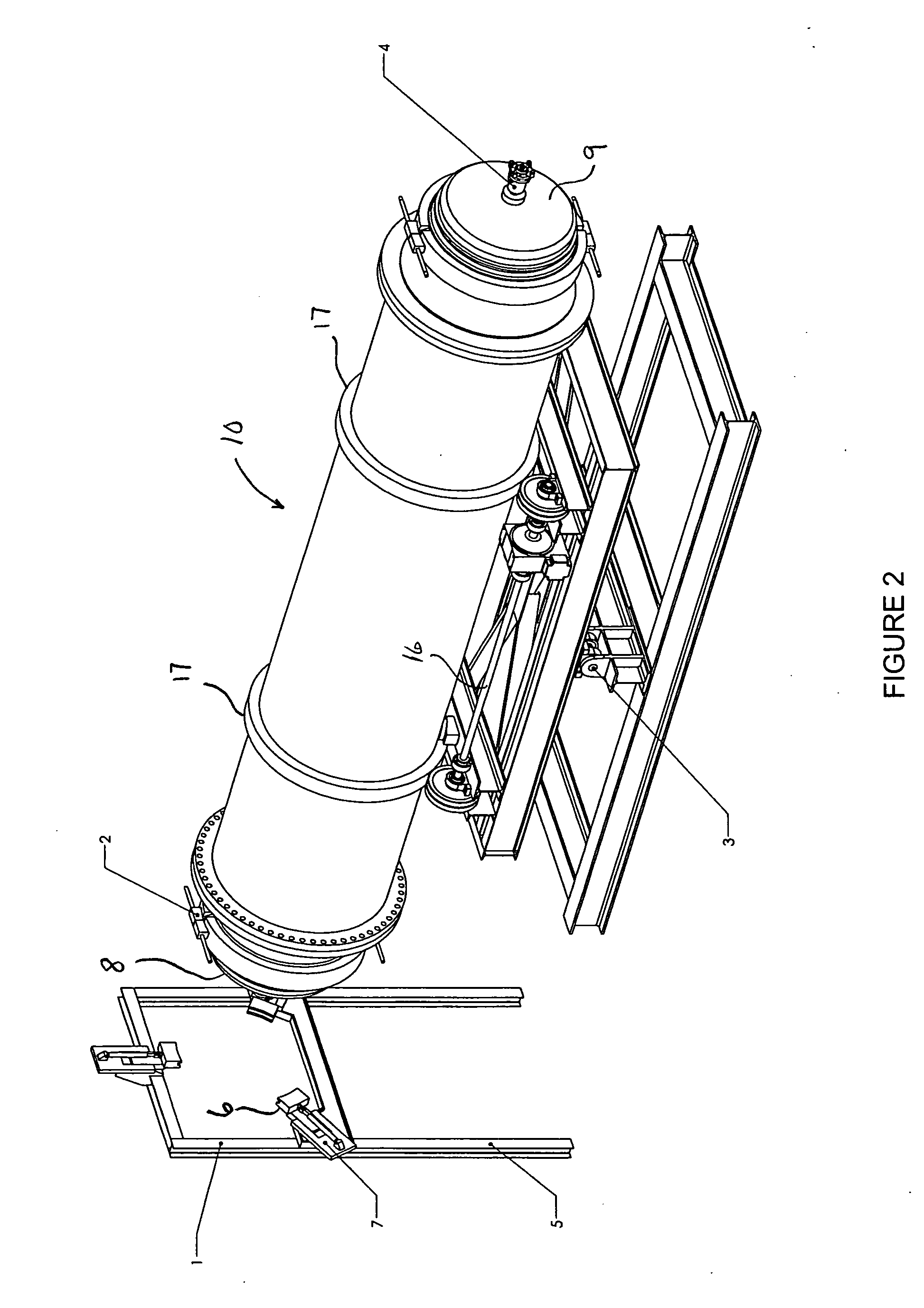Waste treatment vessel featuring tilt mechanism and associated door arrangement
- Summary
- Abstract
- Description
- Claims
- Application Information
AI Technical Summary
Benefits of technology
Problems solved by technology
Method used
Image
Examples
Embodiment Construction
[0052]In accordance with the foregoing summary, the following provides a detailed description of the preferred embodiment, which is presently considered to be the best mode thereof.
[0053]FIGS. 1-6 and 8 are views of a vessel and door system for processing solid waste products in accordance with one embodiment of the present invention. Like reference numerals are used to refer to corresponding elements and features in each of the Figures as described below.
[0054]FIG. 1 is an elevation view of a vessel and door system for processing solid waste products in accordance with one embodiment of the present invention. FIG. 1 shows a side view of the autoclave vessel 10 in normal operating position, with doors 8 and 9 attached. For simplicity, steam hoses and other details are not shown.
[0055]FIG. 1 shows door support unit 1 having door engagement clamps such as 7 that are adapted to capture and retain doors such as 8 or conversely door 9 when such an apparatus as door support unit 1 is disp...
PUM
 Login to View More
Login to View More Abstract
Description
Claims
Application Information
 Login to View More
Login to View More - R&D
- Intellectual Property
- Life Sciences
- Materials
- Tech Scout
- Unparalleled Data Quality
- Higher Quality Content
- 60% Fewer Hallucinations
Browse by: Latest US Patents, China's latest patents, Technical Efficacy Thesaurus, Application Domain, Technology Topic, Popular Technical Reports.
© 2025 PatSnap. All rights reserved.Legal|Privacy policy|Modern Slavery Act Transparency Statement|Sitemap|About US| Contact US: help@patsnap.com



